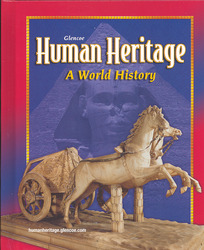
Human Heritage: A World HistoryChapter 26: Rise of Trade and TownsRise of Trade and TownsDuring the early 1000s and 1100s, things went well for the people of western Europe. The number of births exceeded the number of deaths, better farming methods resulted in more food, and many peasants became skilled artisans. Western nobles desired the luxury goods that came from the Near East, and they increased trade in order to get them. Chapter 26 examines the growth of trade and towns during the Middle Ages. Section 1 discusses how the growth of trade led to the rise of towns in the Middle Ages, focusing on Venice and Flanders. Section 2 tells how merchants became an important part of European life and development and contributed to the growth of burgs. Section 3 describes the living conditions in medieval towns before and after the changes brought about by burghers. Section 4 focuses on the rise of craft guilds, explaining why they were formed and why they were later opposed. Section 5 discusses the cultural changes that took place to European civilization during the 1400s, focusing on advances in education, art, and literature. |  |















